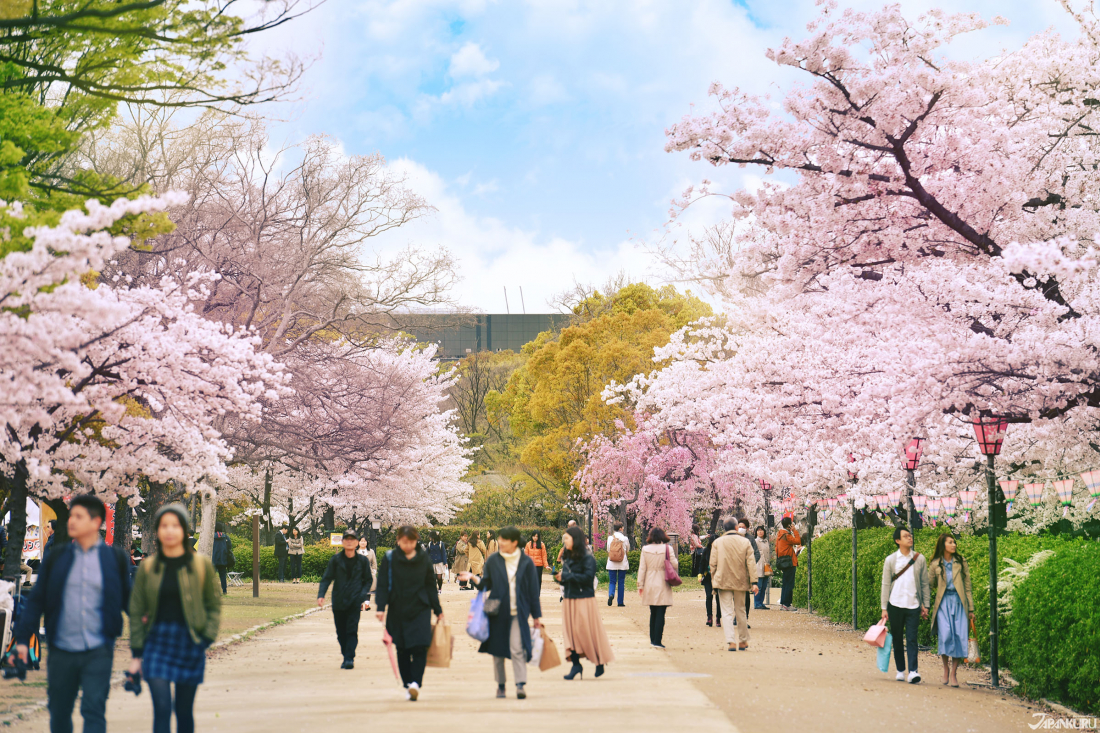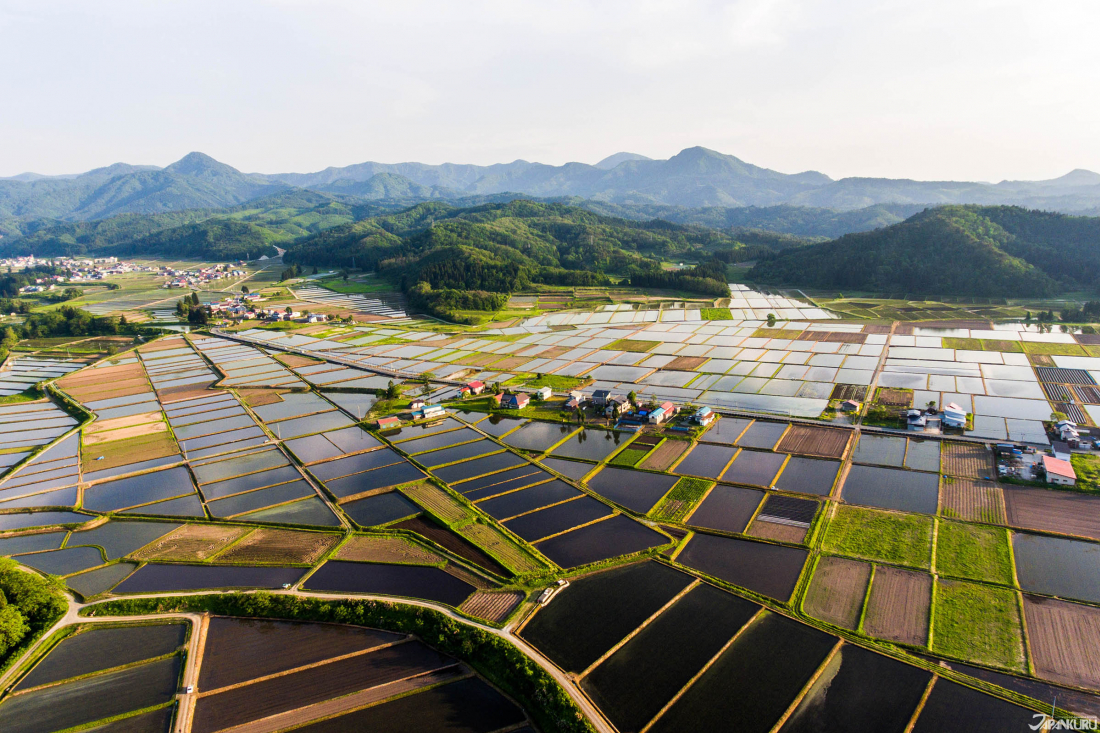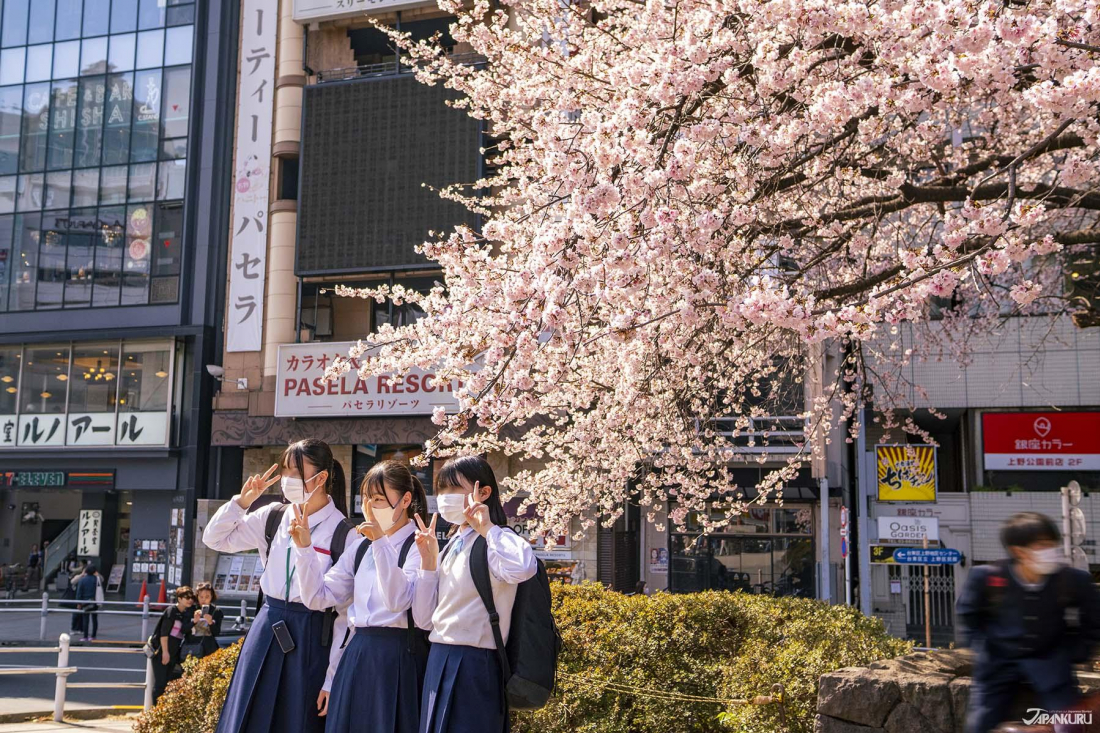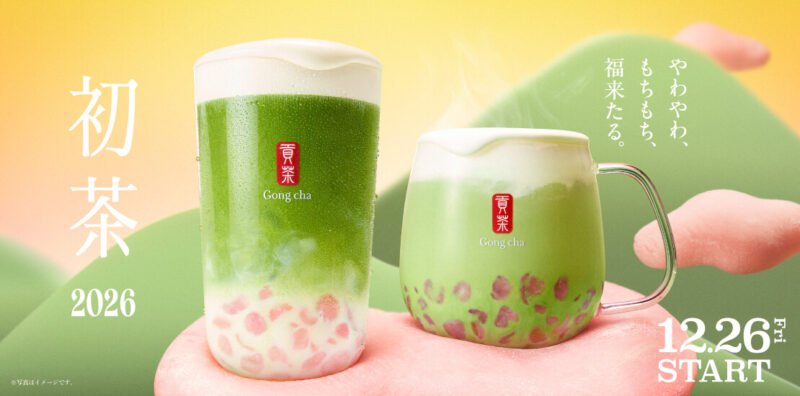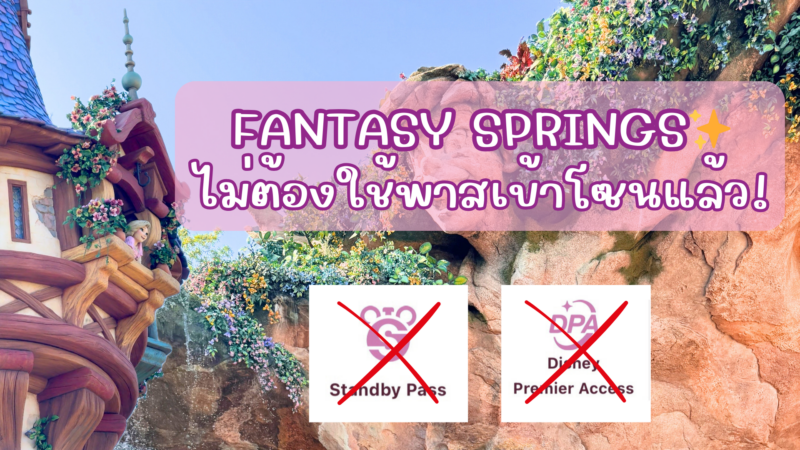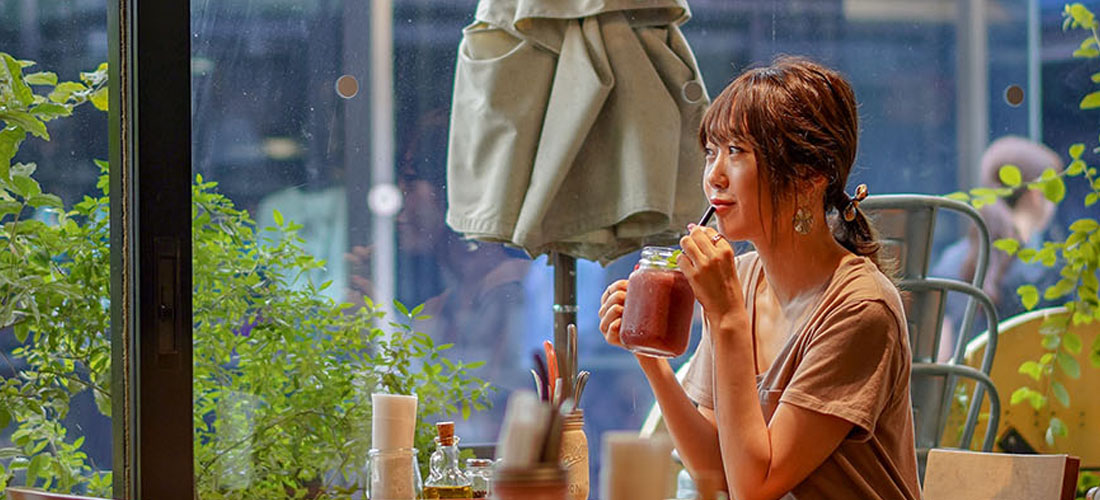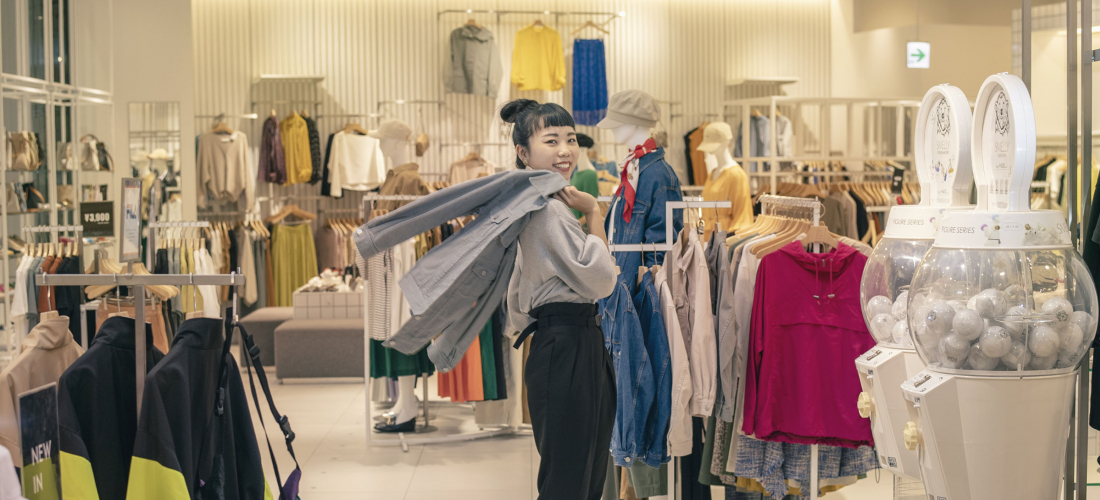CONTENTS
สาเหตุที่คาดไม่ถึงของการเริ่มต้นใหม่ในเดือนเมษายนของประเทศญี่ปุ่น
ความเป็นมาของการเริ่มต้นช่วงเดือนเมษายน
ที่ประเทศญี่ปุ่น การเริ่มต้นปีการศึกษาใหม่ การเริ่มงานวันแรก การเริ่มกิจกรรมชมรม หรือกิจกรรมต่าง ๆ มักเริ่มในช่วงต้นเดือนเมษายน หากดูจากความที่คนญี่ปุ่นส่วนใหญ่เป็นคนรักฤดูกาลทั้งสี่และประเพณีโบราณ หลาย ๆ คนอาจคิดว่าน่าจะเป็นเพราะอากาศที่อุ่นขึ้น รวมถึงภาพของต้นอ่อนและดอกไม้ที่เริ่มผลิบาน ดอกซากุระที่บานสะพรั่ง น่าจะเป็นเหตุผลที่กระตุ้นให้ผู้คนเริ่มต้นสิ่งใหม่ ๆ กันในช่วงนี้
แต่น่าเสียดายที่เหตุผลที่แท้จริงไม่ได้โรแมนติกแบบนั้น ย้อนกลับไปเมื่อประมาณ 200 ปีก่อน ในสมัยนั้นโรงเรียนส่วนใหญ่จัดตั้งและดำเนินกิจการโดยวัดศาสนาพุทธหรือวัดขงจื๊อ ทั้งยังมีสถานศึกษาแบบเร่งรัดที่ดำเนินการโดยกลุ่มซามูไรซึ่งเปิดรับนักเรียนใหม่ตลอดทั้งปี
จนกระทั่งถึงช่วงกลางศตวรรษที่ 19 อิทธิพลของตะวันตกเริ่มแทรกซึมเข้าสู่ญี่ปุ่น และผลจากการโค่นล้มการฟื้นฟูเมจิในปี 1886 ได้ปลดล็อกให้กระแสวัฒนธรรมตะวันตกหลั่งไหลเข้ามาในญี่ปุ่น ส่งผลให้ระบบการศึกษาของญี่ปุ่นเริ่มเป็นรูปเป็นร่างอย่างที่เห็นในทุกวันนี้ ในสมัยนั้นโรงเรียนที่ได้รับอิทธิพลจากตะวันตกจึงเริ่มต้นปีการศึกษาใหม่ในเดือนกันยายนเช่นเดียวกับโรงเรียนในประเทศตะวันตก
เหตุผลที่แท้จริงของการเปลี่ยนแปลงครั้งใหญ่
ส่วนสาเหตุที่เปลี่ยนจากเดือนกันยายนมาเป็นเดือนเมษายนคือเรื่อง “เงิน”
ในปี 1886 รัฐบาลญี่ปุ่นตัดสินใจเริ่มปีงบประมาณอย่างเป็นทางการในเดือนเมษายน การเปลี่ยนแปลงใหม่นี้ได้รับอิทธิพลบางส่วนจากปีงบประมาณของสหราชอาณาจักรที่มีอำนาจทางเศรษฐกิจ และอีกเหตุผลหนึ่งคือความพยายามในการตอบสนองต่อเกษตรกรผู้ปลูกข้าว เพื่อให้มีเวลามากขึ้นในการจ่ายภาษีหลังการเก็บเกี่ยวในฤดูใบไม้ร่วง และใช้เวลาช่วงฤดูหนาวในการหาแหล่งเงินทุน
ผลของการเปลี่ยนแปลงนี้ก่อให้เกิดความไม่สะดวกในการจัดหาเงินทุนให้แก่โรงเรียนที่ดำเนินการโดยรัฐบาล ดังนั้นเพื่อลดปัญหาที่เกิดจากตารางเรียนที่แตกต่างกัน รัฐบาลจึงประกาศให้โรงเรียนสามัญระดับอุดมศึกษาเปลี่ยนไปเปิดภาคเรียนใหม่ในเดือนเมษายน กระแสของการเปลี่ยนแปลงนี้ได้แพร่กระจายไปทั่ววงการการศึกษาทั่วประเทศ ทั้งระดับวิทยาลัยและโรงเรียนประถมศึกษา
ช่วงสมัยไทโช (ปี 1912-1926) โรงเรียนมัธยมปลายและมหาวิทยาลัยต่าง ๆ เริ่มปรับกำหนดการให้ไปในแนวทางเดียวกัน เทรนการหางานของญี่ปุ่นเองก็ปรับเปลี่ยนไปตามกระแสของวงการการศึกษานี้ด้วย ที่ญี่ปุ่นโดยปกติแล้วนักศึกษามหาวิทยาลัยจะเริ่มสมัครและสัมภาษณ์งานกันในช่วงปีท้าย ๆ ของการศึกษา ด้วยรูปแบบดังกล่าวทำให้นักศึกษาส่วนใหญ่จะได้งานก่อนเรียนจบและเริ่มทำงานวันแรกหลังเรียนจบเพียงไม่กี่สัปดาห์ ทำให้แม้จบจากระบบการศึกษาไปแล้ว แต่เดือนเมษายนก็ยังคงเป็นจุดเริ่มต้นของจุดเปลี่ยนสำคัญในชีวิตของคนญี่ปุ่น
เริ่มต้นใหม่พร้อมฤดูใบไม้ผลิที่สดใส
สำหรับประเทศญี่ปุ่น เดือนเมษายนเรียกได้ว่าเป็นฤดูกาลแห่งการเริ่มต้นใหม่ ไม่ว่าจะเป็นการเริ่มขึ้นชั้นปีใหม่ การเริ่มเรียนในโรงเรียนใหม่ การเริ่มงานใหม่ บรรยากาศแห่งการเริ่มต้นนี้ส่งผลให้คนญี่ปุ่นหลายคนเริ่มทำสิ่งใหม่ ๆ ในช่วงนี้แม้แต่เรื่องเล็ก ๆ รอบตัวอย่างการเลือกซื้อของใช้ใหม่ ๆ หรือการจัดตู้เสื้อผ้าใหม่
ติดตามเรื่องราว ข้อมูล และข่าวสารส่งตรงจากญี่ปุ่นกับ Japankuru ได้ทาง Twitter และ Facebook!
Looking for the latest trends and products coming out of Japan? We've got you covered!
COMMENT
FEATURED MEDIA
VIEW MORE 
A New Tokyo Animal Destination: Relax & Learn About the World’s Animals in Japan
#pr #japankuru #anitouch #anitouchtokyodome #capybara #capybaracafe #animalcafe #tokyotrip #japantrip #카피바라 #애니터치 #아이와가볼만한곳 #도쿄여행 #가족여행 #東京旅遊 #東京親子景點 #日本動物互動體驗 #水豚泡澡 #東京巨蛋城 #เที่ยวญี่ปุ่น2025 #ที่เที่ยวครอบครัว #สวนสัตว์ในร่ม #TokyoDomeCity #anitouchtokyodome

Shohei Ohtani Collab Developed Products & Other Japanese Drugstore Recommendations From Kowa
#pr #japankuru
#kowa #syncronkowa #japanshopping #preworkout #postworkout #tokyoshopping #japantrip #일본쇼핑 #일본이온음료 #오타니 #오타니쇼헤이 #코와 #興和 #日本必買 #日本旅遊 #運動補充能量 #運動飲品 #ช้อปปิ้งญี่ปุ่น #เครื่องดื่มออกกำลังกาย #นักกีฬา #ผลิตภัณฑ์ญี่ปุ่น #อาหารเสริมญี่ปุ่น

도쿄 근교 당일치기 여행 추천! 작은 에도라 불리는 ‘가와고에’
세이부 ‘가와고에 패스(디지털)’ 하나면 편리하게 이동 + 가성비까지 완벽하게! 필름카메라 감성 가득한 레트로 거리 길거리 먹방부터 귀여움 끝판왕 핫플&포토 스폿까지 총집합!
Looking for day trips from Tokyo? Try Kawagoe, AKA Little Edo!
Use the SEIBU KAWAGOE PASS (Digital) for easy, affordable transportation!
Check out the historic streets of Kawagoe for some great street food and plenty of picturesque retro photo ops.
#pr #japankuru #도쿄근교여행 #가와고에 #가와고에패스 #세이부패스 #기모노체험 #가와고에여행 #도쿄여행코스 #도쿄근교당일치기 #세이부가와고에패스
#tokyotrip #kawagoe #tokyodaytrip #seibukawagoepass #kimono #japantrip

Hirakata Park, Osaka: Enjoy the Classic Japanese Theme Park Experience!
#pr #japankuru #hirakatapark #amusementpark #japantrip #osakatrip #familytrip #rollercoaster #retrôvibes #枚方公園 #大阪旅遊 #關西私房景點 #日本親子旅行 #日本遊樂園 #木造雲霄飛車 #히라카타파크 #สวนสนุกฮิราคาตะพาร์ค

🍵Love Matcha? Upgrade Your Matcha Experience With Tsujiri!
・160년 전통 일본 말차 브랜드 츠지리에서 말차 덕후들이 픽한 인기템만 골라봤어요
・抹茶控的天堂!甜點、餅乾、飲品一次滿足,連伴手禮都幫你列好清單了
・ส่องมัทฉะสุดฮิต พร้อมพาเที่ยวร้านดังในอุจิ เกียวโต
#pr #japankuru #matcha #matchalover #uji #kyoto #japantrip #ujimatcha #matchalatte #matchasweets #tsujiri #말차 #말차덕후 #츠지리 #교토여행 #말차라떼 #辻利抹茶 #抹茶控 #日本抹茶 #宇治 #宇治抹茶 #日本伴手禮 #抹茶拿鐵 #抹茶甜點 #มัทฉะ #ของฝากญี่ปุ่น #ชาเขียวญี่ปุ่น #ซึจิริ #เกียวโต

・What Is Nenaito? And How Does This Sleep Care Supplement Work?
・你的睡眠保健品——認識「睡眠茶氨酸錠」
・수면 케어 서플리먼트 ‘네나이토’란?
・ผลิตภัณฑ์เสริมอาหารดูแลการนอน “Nenaito(ネナイト)” คืออะไร?
#pr #japankuru #sleepcare #japanshopping #nenaito #sleepsupplement #asahi #睡眠茶氨酸錠 #睡眠保健 #朝日 #l茶胺酸 #日本藥妝 #日本必買 #일본쇼핑 #수면 #건강하자 #네나이토 #일본영양제 #อาหารเสริมญี่ปุ่น #ช้อปปิ้งญี่ปุ่น #ร้านขายยาญี่ปุ่น #ดูแลตัวเองก่อนนอน #อาซาฮิ

Japanese Drugstore Must-Buys! Essential Items from Hisamitsu® Pharmaceutical
#PR #japankuru #hisamitsu #salonpas #feitas #hisamitsupharmaceutical #japanshopping #tokyoshopping #traveltips #japanhaul #japantrip #japantravel

Whether you grew up with Dragon Ball or you just fell in love with Dragon Ball DAIMA, you'll like the newest JINS collab. Shop this limited-edition Dragon Ball accessory collection to find some of the best Dragon Ball merchandise in Japan!
>> Find out more at Japankuru.com! (link in bio)
#japankuru #dragonball #dragonballdaima #animecollab #japanshopping #jins #japaneseglasses #japantravel #animemerch #pr

This month, Japankuru teamed up with @official_korekoko to invite three influencers (originally from Thailand, China, and Taiwan) on a trip to Yokohama. Check out the article (in Chinese) on Japankuru.com for all of their travel tips and photography hints - and look forward to more cool collaborations coming soon!
【橫濱夜散策 x 教你怎麼拍出網美照 📸✨】
每次來日本玩,是不是都會先找旅日網紅的推薦清單?
這次,我們邀請擁有日本豐富旅遊經驗的🇹🇭泰國、🇨🇳中國、🇹🇼台灣網紅,帶你走進夜晚的橫濱!從玩樂路線到拍照技巧,教你怎麼拍出最美的夜景照。那些熟悉的景點,換個視角說不定會有新發現~快跟他們一起出發吧!
#japankuru #橫濱紅磚倉庫 #汽車道 #中華街 #yokohama #japankuru #橫濱紅磚倉庫 #汽車道 #中華街 #yokohama #yokohamaredbrickwarehouse #yokohamachinatown

If you’re a fan of Vivienne Westwood's Japanese designs, and you’re looking forward to shopping in Harajuku this summer, we’ve got important news for you. Vivienne Westwood RED LABEL Laforet Harajuku is now closed for renovations - but the grand reopening is scheduled for July!
>> Find out more at Japankuru.com! (link in bio)
#japankuru #viviennewestwood #harajuku #omotesando #viviennewestwoodredlabel #viviennewestwoodjapan #비비안웨스트우드 #오모테산도 #하라주쿠 #日本購物 #薇薇安魏斯伍德 #日本時尚 #原宿 #表參道 #japantrip #japanshopping #pr

Ready to see TeamLab in Kyoto!? At TeamLab Biovortex Kyoto, the collective is taking their acclaimed immersive art and bringing it to Japan's ancient capital. We can't wait to see it for ourselves this autumn!
>> Find out more at Japankuru.com! (link in bio)
#japankuru #teamlab #teamlabbiovortex #kyoto #kyototrip #japantravel #artnews
Photos courtesy of teamLab, Exhibition view of teamLab Biovortex Kyoto, 2025, Kyoto ® teamLab, courtesy Pace Gallery

Japanese Makeup Shopping • A Trip to Kamakura & Enoshima With Canmake’s Cool-Toned Summer Makeup
#pr #canmake #enoshima #enoden #에노시마 #캔메이크 #japanesemakeup #japanesecosmetics

⚔️The Robot Restaurant is gone, but the Samurai Restaurant is here to take its place. Check it out, and don't forget your coupon!
🍣신주쿠의 명소 로봇 레스토랑이 사무라이 레스토랑으로 부활! 절찬 쿠폰 발급중
💃18歲以上才能入場的歌舞秀,和你想的不一樣!拿好優惠券去看看~
#tokyo #shinjuku #samurairestaurant #robotrestaurant #tokyotrip #도쿄여행 #신주쿠 #사무라이레스토랑 #이색체험 #할인이벤트 #歌舞伎町 #東京景點 #武士餐廳 #日本表演 #日本文化體驗 #japankuru #japantrip #japantravel #japanlovers #japan_of_insta

Japanese appliance & electronics shopping with our KOJIMA x BicCamera coupon!
用JAPANKURU的KOJIMA x BicCamera優惠券買這些正好❤️
코지마 x 빅 카메라 쿠폰으로 일본 가전 제품 쇼핑하기
#pr #japankuru #japanshopping #kojima #biccamera #japaneseskincare #yaman #dji #osmopocket3 #skincaredevice #日本購物 #美容儀 #相機 #雅萌 #日本家電 #일본여행 #면세 #여행꿀팁 #일본쇼핑리스트 #쿠폰 #일본쇼핑 #일본브랜드 #할인 #코지마 #빅카메라 #japankurucoupon
MAP OF JAPAN
SEARCH BY REGION

LATEST
VIEW MOREEVENT CALENDAR
VIEW MORE






